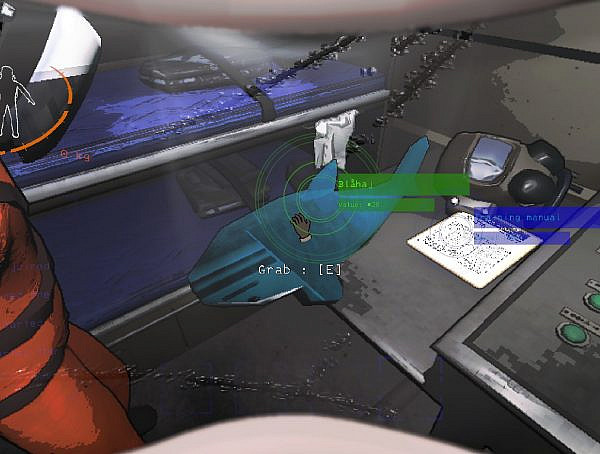Autcraft is a modded Minecraft server created to provide a safe place for autistic children to play.
In her essay “Who Has Access? Making Accessible Play Spaces in Minecraft for Children with Autism” Kathryn E. Ringland explores how the sandbox video game Minecraft (2011) is used to create a fun and safe playing field for children with autism. In Minecraft there’s a modified server named Autcraft which is aimed for this target audience. While Autcraft provides a better accessibility for autistic children to play and create social interactions with others, there are some limitations that affect the playing.
According to Ringland, you have access to something when you can fully experience the interaction with it. Access is an interpretive relation between bodies and the world. It’s often given to people with normative bodies, meaning bodies that are privileged by society. There have been some attempts to make the world more inclusive. One example of this is handicap parking which has been provided to many parking lots. Still, when considering the social aspects of handicap parking, like the need for the parking license, it can be seen to whom the society really gives access to. The access is actually given to a prioritized subgroup of disabled individuals, and those who don’t fit into this category are shamed by society.
Ringland argues that games can have both social and physical barriers. When game developers design their games for some imagined target audience it may create inaccessibility for certain players. This doesn’t only mean people with disabilities but also people from different ethnic groups or people from different genders for example. Moreover, the majority of games is aimed for players with normative bodies. This creates privileges for people who fit into this player group in comparison to those people who don’t.
Minecraft is a sandbox game which Ringland compares to a toybox where many people can play at the same time. Without particular goals or play requirements the players in this toybox can do whatever they like. In Minecraft’s multiplayer mode players can interact with each other as much as they desire. Therefore, Ringland describes Minecraft as more of a virtual world rather than a typical videogame. This kind of interaction makes playing the game more similar to playing in a playground but without the physical limitations that may occur in a regular playfield for autistic children.
Autcraft itself isn’t a typical Minecraft server as it has some unique features. Many of the features are made possible by using different game mods. These features include different customization options for the server owner to modify the single player game as well as the multiplayer game. The server owner can for example organize different activities and events for playing sessions. The use of the special features helps to achieve the goal of Autcraft which is to provide a safe, fun and learning environment for autistic children and their families.
For people with autism social interactions can be challenging. Despite the challenges in this area the autistic people usually have a need for social connections. Online communication provides a way to socialize without a face-to-face contact. Unfortunately, online communication is also problematic as you can’t always tell who to trust and it might be harder to avoid cyberbullying compared to bullying in-person. For these reasons semi-open Autcraft was created, according to Ringland. As Autcraft is a semi-private server it’s controlled who can play there, and this way harmful trolls are kept away from the server.
Still, there are some limitations when it comes to being an autistic kid playing Autcraft. First of all, children aren’t often in control of their computers and playing times. Parents and siblings may affect on when and for how long they can play. According to Ringland, parental involvement ranges from minimal to co-playing with their children. Additionally, there are hardware limitations that affect on how well Autcraft works. There are Autcraft discussion forums where people talk about what hardware is the best for playing.
As different children have different special needs the hardware might also need some adjusting like making a computer screen brighter or sounds louder. Moreover, because Minecraft isn’t a free game you need to buy it first. Ringland discusses that children and parents negotiate about where to spend money on and how to balance the playing with other family life.
Ringland ends her essay by stating that not all accessibility is equal for everybody. Not even all autistic children are able to play Autcraft. Still, for many autistic children Autcraft provides the only place to have friendships and play with other children, and the Autcraft community is trying to make the server available for as many children with special needs as possible.
Source:
Ringland, K. E. (2017). Who Has Access? Making Accessible Play Spaces in Minecraft for Children with Autism.
Available from http://analoggamestudies.org/2017/05/who-has-access-making-accessible-play-spaces-in-minecraft-for-children-with-autism/
You might also like
More from Game Research Highlights
How do you want to do this? – A look into the therapeutic uses of role-playing games
Can playing RPGs contribute positively to your wellbeing? A recent study aims to find out how RPGs are being used …
Eldritch horrors and tentacles – Defining what “Lovecraftian” is in games
H.P. Lovecrafts legacy lives today in the shared world of Cthulhu Mythos and its iconic monsters. Prema Arasu defines the …
Are Souls Games the Contemporary Myths?
Dom Ford’s Approaching FromSoftware’s Souls Games as Myth reveals the Souls series as a modern mythology where gods fall, desires …

















